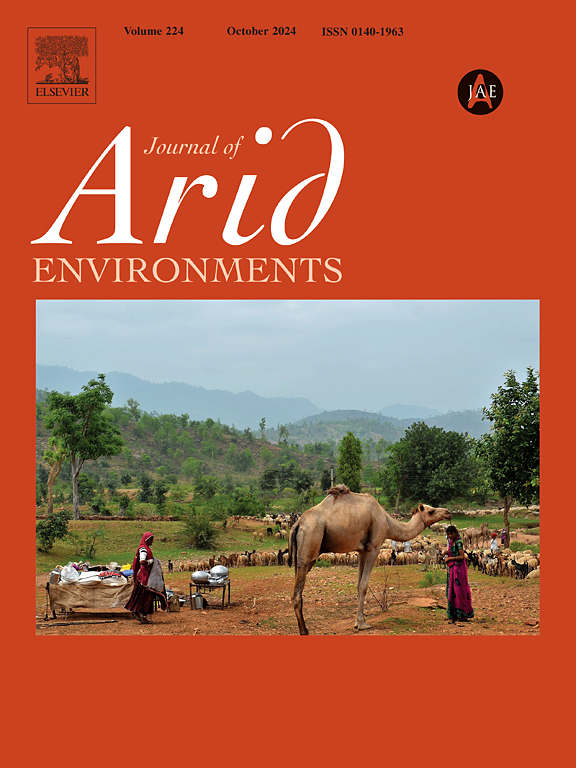Thriving in extremes: Adaptability potential of desert cotton Aerva javanica to hyper-arid saline conditions
IF 2.6
3区 环境科学与生态学
Q2 ECOLOGY
引用次数: 0
Abstract
Aerva javanica is a typical C4 recretohalophyte predominantly found in the hyper-arid saline regions of the Cholistan Desert (Pakistan) and its adjoining areas. Ten populations were gathered from natural habitats to assess adaptive strategies, aiming to rehabilitate hypersaline environments. Desert populations have thicker epidermal layers, enlarged oil glands, stomata, and trichomes, along with reduced thickness of the leaf midrib and lamina, which are essential for surviving extreme aridity. Their deeper roots and increased biomass indicate resistance to environmental stress. Semi-desert populations feature enlarged vascular bundles and thicker leaves for better water conservation, while agricultural populations have smaller stomata and trichomes and larger leaves with longer shoots. Key features include glandular and non-glandular trichomes, oil gland formation, a bundle sheath cell layer indicative of C4 physiology, vascular region partitioning by internal parenchyma, and variations in stomatal size and shape, all enhancing species survival in harsh desert conditions. Principal component analysis indicated that trichome area and stomatal area were positively correlated with soil sodium and electrical conductivity, while trichome number and stomatal density correlated with soil pH. Overall, the adaptive traits of A. javanica could provide key insights for breeding salt-tolerant crops, facilitating the successful cultivation of saline lands.

在极端条件下茁壮成长:沙漠棉javanica对极度干旱盐碱条件的适应性潜力
javanica Aerva是一种典型的C4复盐植物,主要分布在巴基斯坦的克里斯坦沙漠及其邻近地区的极度干旱盐碱区。从自然栖息地收集了10个种群,以评估适应策略,旨在恢复高盐环境。沙漠种群的表皮层较厚,油腺体、气孔和毛状体较大,叶中脉和叶板厚度较薄,这是在极端干旱中生存所必需的。它们的根深和生物量增加表明它们对环境胁迫具有抵抗力。半沙漠种群具有较大的维管束和较厚的叶片,以更好地保持水分,而农业种群具有较小的气孔和毛状体,较大的叶片和较长的芽。主要特征包括腺状和非腺状毛状体、油腺的形成、指示C4生理的束鞘细胞层、内部薄壁组织对维管区域的划分以及气孔大小和形状的变化,这些都提高了物种在恶劣沙漠条件下的生存能力。主成分分析表明,毛状体面积和气孔面积与土壤钠离子和电导率呈显著正相关,毛状体数量和气孔密度与土壤ph呈显著正相关。总体而言,水芹的适应性状可以为选育耐盐作物提供关键信息,促进盐碱地的成功栽培。
本文章由计算机程序翻译,如有差异,请以英文原文为准。
求助全文
约1分钟内获得全文
求助全文
来源期刊

Journal of Arid Environments
环境科学-环境科学
CiteScore
5.70
自引率
3.70%
发文量
144
审稿时长
55 days
期刊介绍:
The Journal of Arid Environments is an international journal publishing original scientific and technical research articles on physical, biological and cultural aspects of arid, semi-arid, and desert environments. As a forum of multi-disciplinary and interdisciplinary dialogue it addresses research on all aspects of arid environments and their past, present and future use.
 求助内容:
求助内容: 应助结果提醒方式:
应助结果提醒方式:


